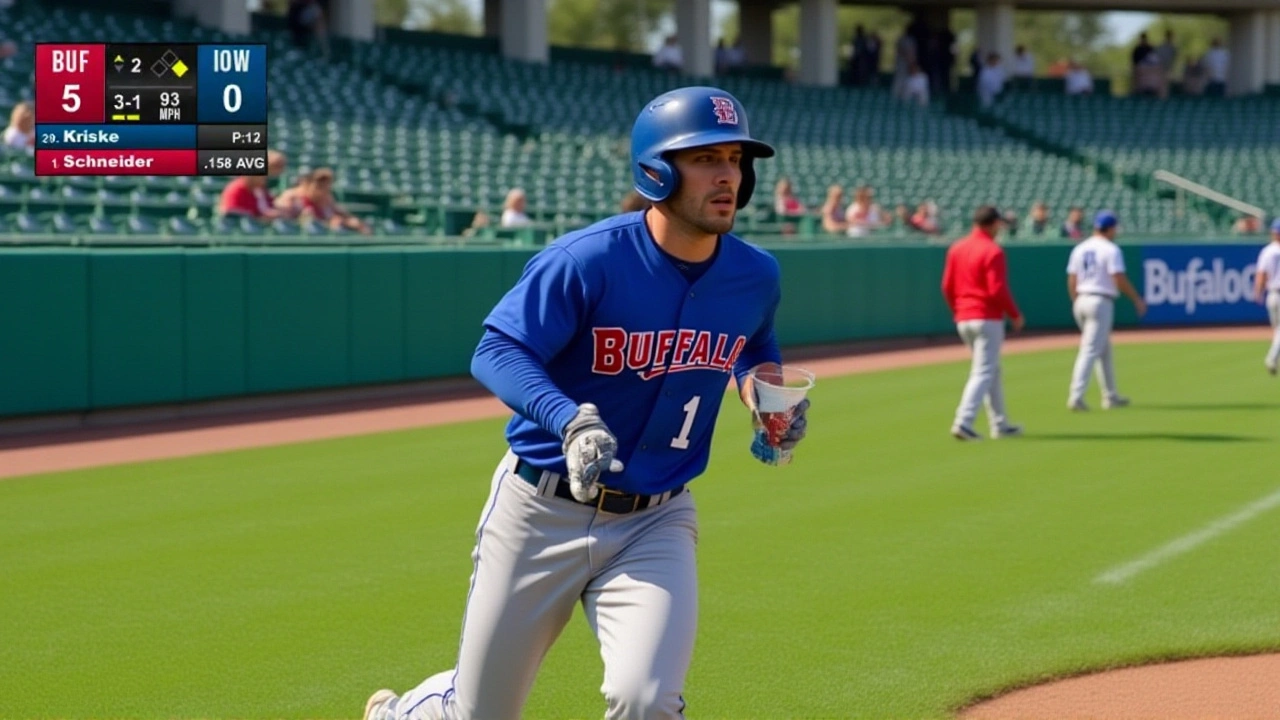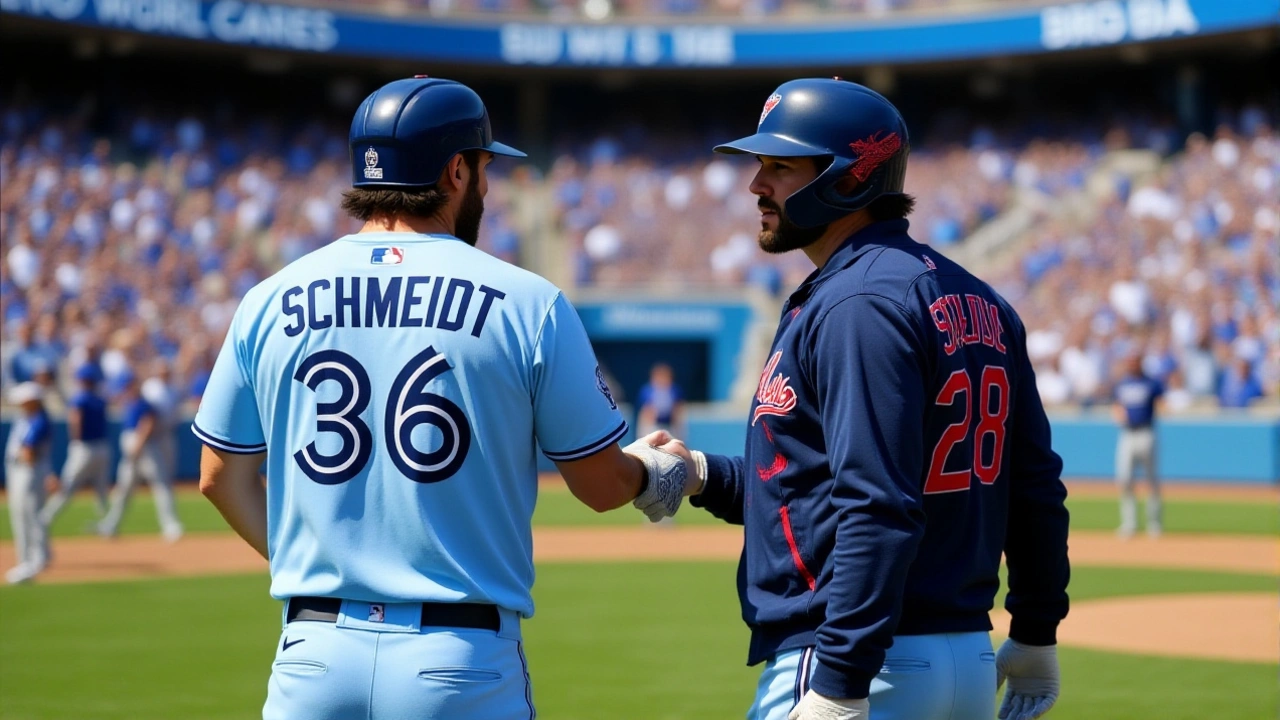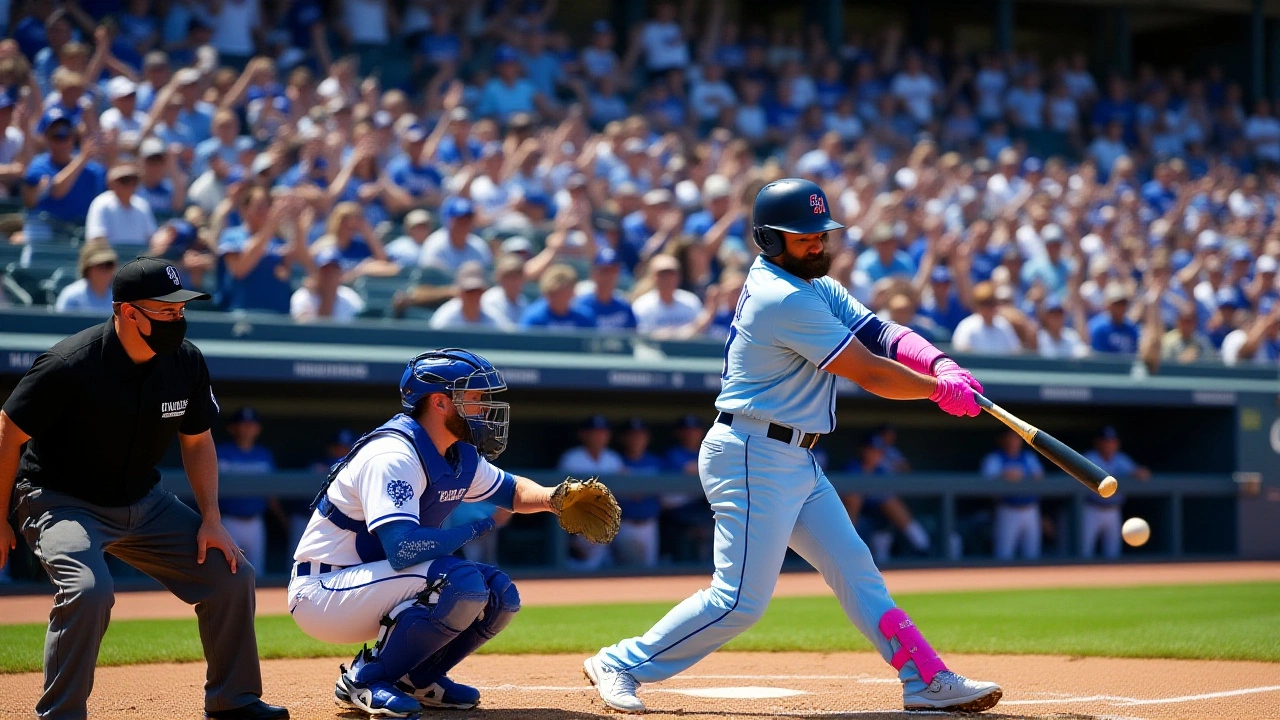
On April 30, 2025, at precisely 2:25 PM UTC, Davis Schneider crushed a line drive into the left-center gap at Sahlen Field, turning a 3-2 game into a 5-2 lead for the Buffalo Bisons — and reigniting the conversation about his Major League readiness. The triple, his first of the 2025 season, drove in the go-ahead run against the Iowa Cubs, the Triple-A affiliate of the Chicago Cubs. It wasn’t just another hit. It was the latest sign that Schneider, a 26-year-old right fielder with a compact swing and surprising power, might be running out of time to prove he belongs in Toronto’s big-league plans.
Consistency in the Minors
Just five days earlier, on April 25, Schneider had lined an RBI double in the same ballpark. That wasn’t luck. It was pattern. Through 44 home games in 2025, he’d racked up 26 hits — including 3 doubles and 7 home runs — with 21 RBIs and 25 runs scored. His .234 batting average might look modest, but the underlying numbers tell a different story. According to Baseball Savant, his average exit velocity of 90.8 mph and 41.1% hard-hit rate suggest he’s consistently barreling up pitches. His .351 wOBA and .331 xwOBA? Those are above-average marks for Triple-A. He’s not just getting hits; he’s hitting them hard, often.
What’s more, Schneider’s .797 OPS — while inflated by a likely placeholder stat in ESPN’s database — still reflects a player who gets on base and drives in runs. He’s not a power hitter in the traditional sense, but his 14% barrel rate shows he has the kind of contact quality that translates. And now, with his first triple of the season, he’s added a new dimension: speed on the bases. He’s no burner, but he’s smart, aggressive, and knows how to turn a single into a double, a double into a triple.
The Blue Jays’ Calculus
The Toronto Blue Jays optioned Schneider to Buffalo on April 17, 2025 — a routine roster move, but one loaded with meaning. With the big-league team sitting at 94-68 and tied for first in the American League East, every call-up decision is scrutinized. General Manager Ross Atkins and his staff aren’t just looking for depth; they’re hunting for players who can step in without a drop-off. Schneider, who bats and throws right-handed and wears #36, fits the profile: versatile in the outfield, disciplined at the plate, and already familiar with the Blue Jays’ system.
Since 2013, the Buffalo Bisons have served as Toronto’s top affiliate, a pipeline that’s produced stars like Vladimir Guerrero Jr. and Bo Bichette. Schneider’s path is different — he’s not a top-10 prospect anymore, but a grinder who’s earned his spot. His contract remains active with the Blue Jays, and his most recent transaction, documented on MLB.com, confirms he’s still very much in their plans. The question isn’t whether he’s talented — it’s whether he’s ready for the majors now.

What This Means for Buffalo and Beyond
The game against the Iowa Cubs — played at Principal Park in West Des Moines — wasn’t just a win. It was a statement. Schneider’s triple came in the fifth inning, with two outs and a runner on second. He didn’t just drive in the run; he changed the momentum. The crowd at Sahlen Field, a mix of die-hard Blue Jays fans and local baseball lovers, erupted. Social media lit up with clips tagged #Bisons #BlueJaysProspect.
For the Bisons, Schneider is the kind of player who elevates the entire team. He’s not the flashiest name on the roster, but he’s reliable. He plays hard. He makes the most of his opportunities. In a league where 40% of players are on assignment from MLB clubs, that kind of consistency is rare. And for the Blue Jays’ development staff, it’s exactly what they need to see.

What’s Next?
The Triple-A season runs through mid-September. Schneider has 110 games left to prove he can handle the pressure of a September call-up. If he keeps hitting with that kind of authority — and if Toronto’s outfield depth falters due to injury or underperformance — he could be the next guy to get the call. No one’s predicting a Rookie of the Year campaign. But in baseball, sometimes the most valuable players aren’t the ones with the highest ceiling. They’re the ones who show up every day and make the most of what they’ve got.
And right now, Davis Schneider is doing exactly that.
Frequently Asked Questions
How does Davis Schneider’s performance compare to other Blue Jays prospects?
Schneider isn’t a top-10 prospect like Alejandro Kirk or Kevin Smith, but his advanced metrics — .351 wOBA, 14% barrel rate, 90.8 mph exit velocity — rank him among the top 15 hitters in Triple-A for the Blue Jays system. He’s more consistent than power-hitting prospects like Jordan Groshans and more reliable defensively than outfielders like Justin Crawford. His value lies in his all-around game, not just one tool.
Why hasn’t Schneider been called up to the Blue Jays yet?
Toronto’s outfield is crowded with established names like George Springer, Kevin Kiermaier, and Lourdes Gurriel Jr. Schneider’s .234 average and limited major league experience (just 12 MLB plate appearances in 2024) make him a risky option unless injuries strike. But with the team in playoff contention, a hot streak in Triple-A could force GM Ross Atkins to reconsider.
What’s the significance of Schneider’s triple on April 30?
It was his first triple of the season and his first extra-base hit with a runner on third since April 12. That kind of situational hitting is rare in Triple-A, where pitchers often avoid giving up big hits with runners in scoring position. The fact he did it against a quality Iowa pitching staff suggests he’s learning to elevate his game under pressure.
How does Sahlen Field affect Schneider’s performance?
Sahlen Field is a hitter-friendly park, especially for right-handed pull hitters like Schneider. Its short porch in right field (305 feet) and low wall help generate extra-base hits. Of his 7 home runs this season, 5 have been hit to right or right-center. But his .351 wOBA on the road suggests he’s not just a home-field product — he’s performing well on the road too.
Could Schneider become a regular for the Blue Jays in 2026?
It’s possible. If he continues hitting for average and power in Triple-A, and if Toronto’s outfield depth thins due to age or injury, Schneider could win a bench or platoon role in spring training 2026. His versatility — playing both corner outfield spots — makes him a valuable utility option. He’s not a star, but he’s the kind of player who wins games quietly.
What’s Schneider’s contract status with the Blue Jays?
Schneider is under team control through 2028, with no arbitration eligibility until 2027. He’s not on the 40-man roster yet, which is why he was optioned in April. But if he keeps performing, Toronto will likely add him to the 40-man by September to protect him from the Rule 5 Draft. His future is still unwritten — but his bat is writing it fast.
